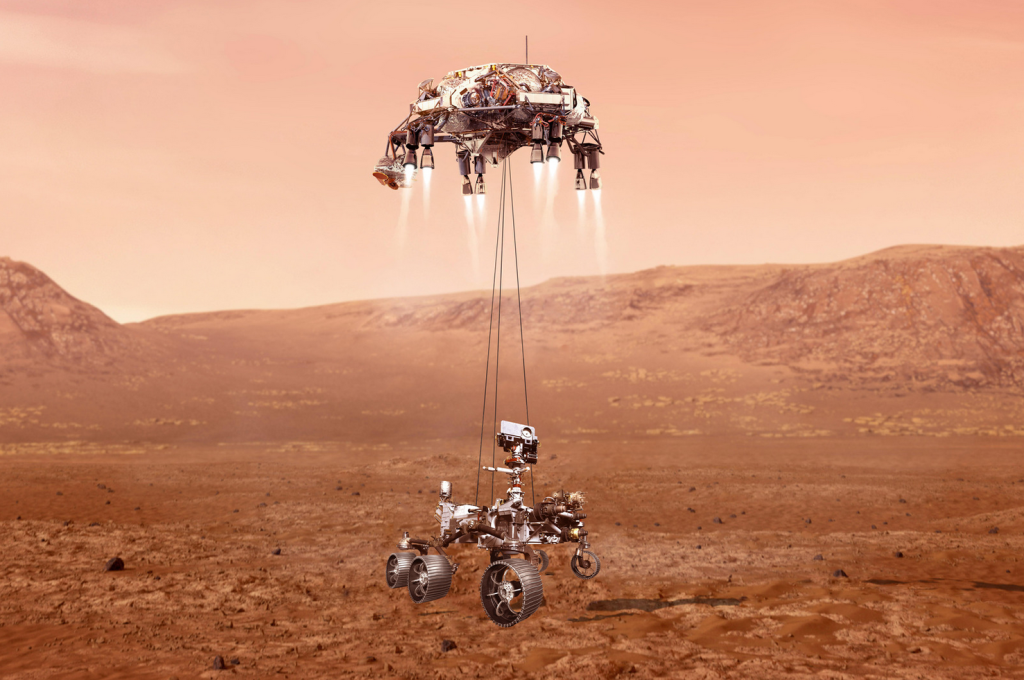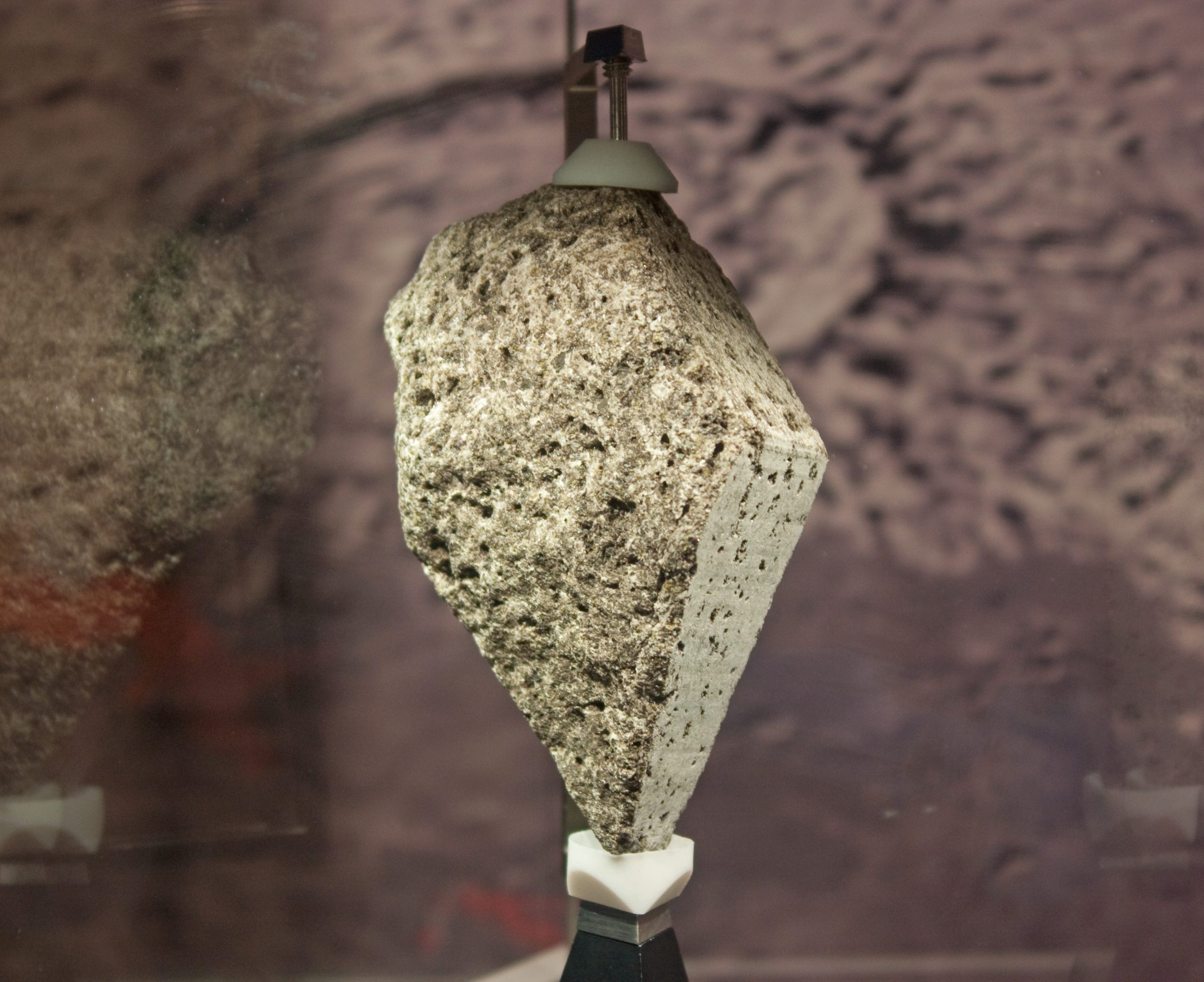Space exploration has entered a new era, one where AI and Robotics are reshaping how we study distant planets, moons, and asteroids. Traditional planetary geology relied on telescopes, human-led missions, and sample return programs, but now, cutting-edge autonomous rovers, AI-driven data analysis, and robotic explorers are revolutionizing the field. These innovations are making it possible to map alien landscapes, analyze rock compositions, and even search for signs of extraterrestrial life—all without direct human intervention.
The Role of AI in Space Geology
AI is playing a crucial role in processing vast amounts of geological data from space missions. In space exploration, every byte of information is precious, and AI-powered systems help analyze complex datasets efficiently. Here are some key ways AI is reshaping space geology:
1. Autonomous Rovers and Landers 🦾
NASA’s Perseverance Rover on Mars is equipped with AI and Robots powered navigation that allows it to make decisions independently. Instead of waiting for commands from Earth (which can take minutes or even hours due to distance), these rovers use AI to detect obstacles, select rock samples, and identify geological features in real time.
2. AI-Powered Geological Mapping 🗺️
AI and Robots driven algorithms can analyze satellite and rover images to map planetary surfaces and identify regions of interest. NASA and ESA (European Space Agency) use machine learning to analyze thousands of high-resolution images from Mars, the Moon, and asteroids, reducing the time scientists spend manually classifying terrain types.
3. Data Analysis and Pattern Recognition 📊
AI helps scientists spot patterns in planetary geology that may indicate past water flows, volcanic activity, or even potential biosignatures. AI-driven models can also predict where valuable minerals or water ice might be found on the Moon or Mars, aiding in future colonization efforts.
4. Predictive Modeling for Future Missions 🚀
Before sending rovers or landers to a planet, AI is used to simulate conditions and test possible mission scenarios. These predictive models help scientists understand how spacecraft will interact with different terrains, dust storms, and temperature fluctuations.
Robotics and Planetary Science: Pushing the Boundaries
Beyond AI, advanced robotics is making space geology more efficient. Robots can explore hostile environments, collect samples, and even construct bases for future human missions. The Role of Geology in Space Exploration: How Scientists Study Other Planets – GIS Valley Here’s how robotics is shaping planetary geology:
1. Next-Gen Rovers 🤖
NASA’s VIPER Rover (Volatiles Investigating Polar Exploration Rover) is designed to search for water ice on the Moon. This fully autonomous rover will explore permanently shadowed lunar craters, helping to pave the way for future Moon bases.
2. Snake-Like Robots for Lava Tubes 🐍
A project known as EELS (Exobiology Extant Life Surveyor) is developing snake-like robots to explore lava tubes on Mars and the Moon. These tunnels could be ideal locations for future human habitats, and robotic explorers can map them before astronauts arrive.
3. Swarm Robotics for Large-Scale Exploration 🐝
Instead of a single rover, space agencies are considering swarm robotics—groups of small, AI-driven robots working together. These swarms could explore large areas of Mars or Europa, collecting soil samples, mapping terrain, and even working in teams to construct shelters for future missions.
Major Missions Utilizing AI and Robotics

1. Mars 2020 (Perseverance Rover) 🔴
NASA’s Perseverance Rover is the most advanced AI-driven rover to date. It is searching for signs of ancient microbial life and caching rock samples for a future return to Earth. AI enables it to navigate independently and identify promising geological formations.
2. Lunar Gateway and Artemis Program 🌙
NASA’s Artemis program aims to establish a sustainable human presence on the Moon. AI will help coordinate robotic landers, rovers, and even 3D-printed lunar habitats. The Lunar Gateway space station will also use AI for mission planning and astronaut assistance.
3. JUICE Mission to Jupiter’s Moons 🌍
ESA’s JUICE (Jupiter Icy Moons Explorer) mission will investigate Europa, Ganymede, and Callisto. AI will process radar and spectrometer data to determine whether these moons could host subsurface oceans—key locations in the search for extraterrestrial life.
4. OSIRIS-REx and Bennu Sample Return ☄️
NASA’s OSIRIS-REx used AI to select a safe landing spot on the asteroid Bennu. The mission successfully collected samples, which will provide insight into the early solar system’s geology and chemical composition.
The Future of Space Geology: What’s Next?
As AI and robotics continue to evolve, space geology will become even more advanced. Some exciting future developments include:
1. AI-Driven Space Telescopes 🔭
Future telescopes equipped with AI will analyze exoplanets for geological activity, potentially detecting signs of volcanic eruptions, water flows, or even alien landscapes.
2. AI-Assisted Human Exploration 👩🚀
When astronauts return to the Moon and eventually land on Mars, AI-powered assistants will help with navigation, hazard detection, and even medical emergencies.
3. Automated Lunar and Martian Mining ⛏️
AI-powered robots could extract resources from asteroids, the Moon, and Mars, reducing the need to transport materials from Earth. This will be a game-changer for deep space missions.
4. Terraforming Simulations 🌱
Advanced AI models could simulate how to modify the atmospheres of Mars or Venus, exploring the feasibility of terraforming planets for future human habitation.
Final Thoughts: The Intersection of AI, Robotics, and Space Geology
The future of space geology is unfolding at a rapid pace, driven by breakthroughs in AI, autonomous robotics, and machine learning. From self-navigating rovers to intelligent data analysis, these technologies are unlocking the secrets of planetary surfaces, revealing new insights about our solar system, and paving the way for human expansion into space. https://www.blogs.opengrowth.com/how-ai-revolutionizes-space-exploration-and-research
As AI and robotic systems continue to advance, scientists will be able to explore more distant worlds, predict geological activity, and even discover potential habitable planets. The dream of mapping and understanding the universe’s geology is no longer science fiction—it’s becoming a reality.
The next frontier of planetary science will not only be shaped by human ingenuity but also by the intelligent machines that will help us explore the cosmos. 🚀✨


